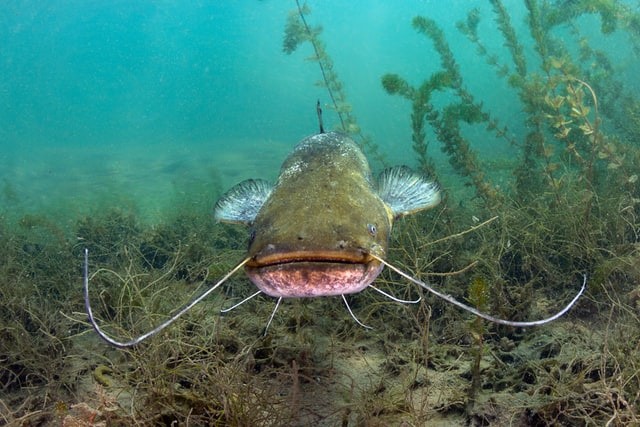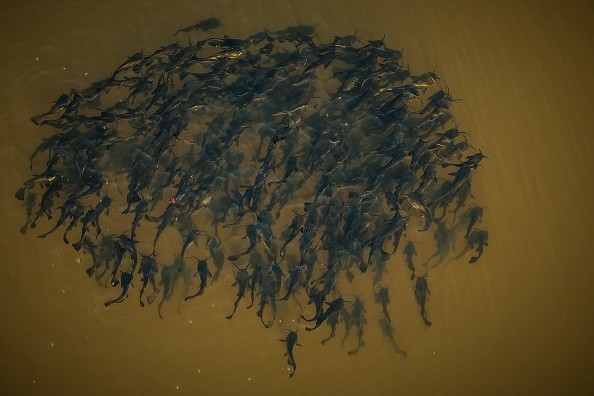A bright-yellow catfish flopped out of the water into Martin Glatz's boat like a big, writhing banana with gills. Glatz, a professional fisher who was fishing with his twin brother Oliver on a lake in the Netherlands, had caught many catfish, but none looked like this. Glatz was initially terrified.
Glatz told LiveScience in an email, "I have never seen such a catfish before. I'm still awestruck by it."
According to Field & Stream, the creature is a wels catfish (Silurus glanis), a huge species native to lakes and rivers throughout Europe. According to the National Oceanic and Atmospheric Administration, these fish can reach a length of at least 9 feet (2.7 meters) and a weight of approximately 300 pounds (130 kilograms).

However, they are rarely as brightly colored as the fish Glatz caught; most wels catfish have dark greenish-black bodies with a few speckled yellow spots, according to NOAA.
There is a high chance the lemon-zested catfish is suffering from leucism, a rare genetic condition characterized by a loss of pigmentation in the skin and hair. (Unlike albinism, a related genetic condition, leucism has no effect on the animal's eyes, according to Live Science.)
Leucism
Leucism is a genetic mutation that prevents melanin and other pigments from being deposited in feathers, hair, or skin. It causes an abnormal condition of reduced pigmentation in various animals (such as birds, mammals, and reptiles).
It's a genetic defect that prevents melanin and other pigments from being deposited in feathers, hair, or skin, resulting in overall pale hue or regions of diminished colour.
Scientists conducted a large-scale study using common blackbirds Turdus merula as model species to explore these assumptions and learn more about leucism.
They employed three alternative ways to analyze the effect of these variables in the presence of leucism: transects, bird catches, and citizen science information, due to the lack of information on this topic and the variety of methodological approaches (pictures from internet).
They discovered a habitat impact, demonstrating that cities had more leucistic blackbirds than non-urban locations. This study suggested habitat is of great effect to the cause of Leucism.

Previous Discovery
Leucism has been found in mammals, reptiles, birds, and fish, leading in unusual appearances like yellow penguins and white killer whales. A leucistic yellow catfish was discovered in the Mississippi River in Iowa in 2017, making local newspaper Herald & Review headlines.
Leucistic creatures, while odd and lovely to humans, are usually at a disadvantage in the wild. Leucistic creatures stand out more to predators because of their light, often bright bodies, and may be easier targets than their fully pigmented relatives, according to Live Science.
This gigantic wels catfish appears to have evaded early death and may live to grow even bigger. Glatz threw the fish back into the water after taking a few shots, hoping that it would grow "extremely huge" and surprise another fisherman on a future fishing trip.
For more news, updates about catfishes and similar topics don't forget to follow Nature World News!
© 2026 NatureWorldNews.com All rights reserved. Do not reproduce without permission.





